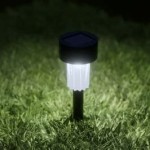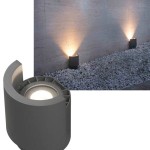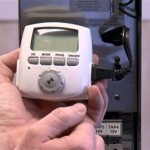Comprehensive Outdoor Equipment List: Essential Gear for Adventure
Engaging in outdoor activities, whether it's hiking, camping, climbing, or simply spending time in nature, requires careful planning and preparation. A well-thought-out outdoor equipment list is paramount for ensuring safety, comfort, and enjoyment. The specific items will vary depending on the chosen activity, duration, and environment, but certain core components are universally applicable. This article will provide a detailed overview of essential outdoor equipment, categorized for clarity and functionality.
Shelter and Sleeping
Protection from the elements is a primary concern in any outdoor setting. Adequate shelter and a comfortable sleep system are crucial for maintaining health and energy levels.
Tent: The selection of a tent should be based on the number of occupants, the season, and the anticipated weather conditions. Three-season tents are suitable for mild weather, while four-season tents are designed to withstand snow and strong winds. Consider the tent's weight, packed size, and ease of setup. Features like a rainfly, waterproof floor, and adequate ventilation are essential.
Sleeping Bag: The sleeping bag's temperature rating should correspond to the lowest expected temperature during the trip. Down-filled sleeping bags offer excellent warmth-to-weight ratio but are less effective when wet. Synthetic sleeping bags retain warmth even when damp but are typically heavier. A compression sack will help reduce the sleeping bag's packed size.
Sleeping Pad: A sleeping pad provides insulation from the cold ground and adds comfort. Options include closed-cell foam pads, inflatable pads, and self-inflating pads. Closed-cell foam pads are durable and affordable but less comfortable. Inflatable pads are more comfortable and pack smaller but are more susceptible to punctures. Self-inflating pads offer a balance of comfort and durability.
Tarp (Optional): A tarp can be used as a groundsheet under the tent for added protection or as a makeshift shelter in emergency situations. It can also provide a covered area for cooking or relaxing during inclement weather.
Clothing and Footwear
Appropriate clothing and footwear are essential for regulating body temperature, protecting against the elements, and preventing injuries.
Base Layers: Base layers are worn next to the skin and wick moisture away from the body, keeping you dry and comfortable. Synthetic materials like polyester or merino wool are ideal. Avoid cotton, as it retains moisture and can lead to hypothermia.
Mid Layers: Mid layers provide insulation and trap body heat. Fleece jackets, down jackets, or insulated vests are suitable options. Choose a mid layer that can be easily removed or added depending on the activity level and weather conditions.
Outer Layer: The outer layer provides protection from wind, rain, and snow. A waterproof and breathable jacket and pants are essential. Look for features like a hood, adjustable cuffs, and taped seams.
Hiking Boots: Sturdy hiking boots with good ankle support are crucial for navigating uneven terrain. Ensure the boots are properly fitted and broken in before embarking on a trip. Consider the type of terrain and the weight of your pack when selecting hiking boots.
Socks: Moisture-wicking socks are essential for preventing blisters. Wool or synthetic socks are recommended. Carry extra pairs of socks to keep your feet dry.
Hat and Gloves: A hat and gloves are essential for protecting against the cold, even in mild weather. Choose a hat that covers your ears and gloves that provide good dexterity. Consider bringing waterproof gloves for wet conditions.
Navigation and Safety
Navigational tools and safety equipment are critical for staying oriented and handling emergencies.
Map and Compass: A topographical map of the area and a compass are essential for navigation. Learn how to use them effectively. Practice reading maps and taking bearings before the trip.
GPS Device (Optional): A GPS device can supplement a map and compass, providing location information and tracking routes. Ensure the device is fully charged and that you have backup batteries.
First-Aid Kit: A comprehensive first-aid kit is essential for treating minor injuries and illnesses. Include items such as bandages, antiseptic wipes, pain relievers, blister treatment, and any personal medications. Consider adding a first-aid manual or taking a wilderness first-aid course.
Headlamp or Flashlight: A headlamp or flashlight is essential for navigating in the dark. Choose a headlamp with adjustable brightness and a long battery life. Carry extra batteries.
Emergency Whistle: A whistle can be used to signal for help in an emergency. Carry a whistle with a loud, high-pitched sound.
Fire Starter: A fire starter, such as a lighter, matches, or a ferro rod, is essential for making a fire for warmth, cooking, or signaling for help. Store the fire starter in a waterproof container.
Knife or Multi-Tool: A knife or multi-tool is useful for a variety of tasks, such as cutting rope, preparing food, and making repairs.
Sun Protection: Sunscreen, sunglasses, and a hat are essential for protecting against the sun's harmful rays. Choose a sunscreen with a high SPF and reapply it frequently. Wear sunglasses that block 100% of UVA and UVB rays.
Cooking and Hydration
Proper nutrition and hydration are essential for maintaining energy levels and overall health.
Stove and Fuel: A portable stove and fuel are necessary for cooking meals. Choose a stove that is lightweight, efficient, and easy to use. Consider the type of fuel available and its suitability for the anticipated weather conditions.
Cookware: Lightweight cookware, such as a pot, pan, and utensils, is essential for preparing meals. Choose cookware made from durable and heat-resistant materials.
Food: Plan meals that are lightweight, nutritious, and easy to prepare. Consider dehydrated foods, energy bars, and trail mix. Pack enough food for the duration of the trip, plus extra in case of emergencies. Store food in airtight containers to prevent spoilage and attract animals.
Water Bottles or Hydration Reservoir: Carry enough water for the duration of the trip. A general guideline is to drink at least two liters of water per day, but this may vary depending on the activity level and weather conditions. Water bottles and hydration reservoirs are convenient ways to carry water. Consider bringing a water filter or purification tablets to treat water from natural sources.
Water Filter or Purification Tablets: If relying on natural water sources, a water filter or purification tablets are essential for removing bacteria, viruses, and other contaminants. Choose a filter or tablets that are effective against a wide range of pathogens.
Miscellaneous Items
In addition to the core equipment listed above, several miscellaneous items can enhance the outdoor experience.
Trekking Poles: Trekking poles can improve balance, reduce strain on joints, and increase efficiency on uneven terrain.
Backpack: A comfortable and appropriately sized backpack is essential for carrying all of your gear. Choose a backpack with adjustable straps and a hip belt to distribute the weight evenly. Consider the capacity of the backpack and the weight of your gear when selecting a backpack.
Repair Kit: A repair kit can be used to fix damaged gear, such as tents, sleeping bags, and backpacks. Include items such as duct tape, needle and thread, and spare buckles.
Insect Repellent: Insect repellent is essential for protecting against mosquitoes, ticks, and other biting insects. Choose a repellent that contains DEET or picaridin.
Toiletries: Pack essential toiletries such as toothbrush, toothpaste, soap, and toilet paper. Dispose of waste properly.
Trash Bags: Pack out all trash. Leave no trace of your visit.
Considerations for Specific Activities
The specific equipment needed will vary based on the chosen outdoor activity. For example, rock climbing requires specialized equipment such as ropes, harnesses, and climbing shoes. Backpacking requires a larger backpack and more extensive cooking equipment. Winter camping requires extra insulation and specialized shelter. It is crucial to research and understand the specific equipment requirements for each activity before embarking on a trip.
Weight and Packability
When selecting outdoor equipment, consider its weight and packability. Lightweight gear is essential for minimizing fatigue and maximizing efficiency, particularly on longer trips. Choose gear that packs down small to save space in your backpack. A well-organized pack will also contribute to a more comfortable and enjoyable experience.
This comprehensive list provides a foundation for preparing for various outdoor adventures. Remember to tailor your equipment list to the specific activity, environment, and duration of your trip. Prioritize safety, comfort, and functionality when making your selections. Careful planning and preparation will help ensure a safe and enjoyable outdoor experience.

Hiking Equipment List Ng Tips Outdoor Sports Guide

Camping Gear List Free Printable Checklist Jordo S World

Backng Gear List Beginner Recommendations Hiking

Hiking Equipment List

Backng Gear List What To Bring On A Trip Rei Expert Advice

Camping Essentials Checklist Rei Expert Advice

Outdoor Gym Setup

Outdoor Exercise Equipment

Mild Steel Yellow Outdoor Gym Equipment
Our Recommended Ng List For Backng Travel Essentials Ze Wandering Frogs
Related Posts







